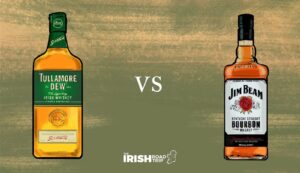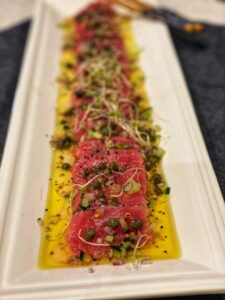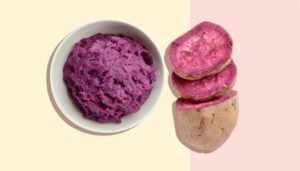
Introduction
Italy’s Prosecco area is undergoing an exciting revival as the producer of one of the most well-known sparkling wines in the world. Made mostly from the white Glera grape, the appellation has long been known for its crisp, brilliant wines. Now, with a renewed focus on sustainability, variety, and place, Prosecco is regaining its reputation as one of Italy’s most pleasurable and adaptable wines.
History
The Prosecco area had possibly the most significant transformation in recent history when it was upgraded from Indicazione Geografica Tipica (IGT) to Denominazione di Origine Controllata (DOC) in 2009, affecting nine provinces. The Prosecco di Conegliano e Valdobbiadine DOC zone was also upgraded by the Italian government to a Denominazione di Origine Controllata e Garantita (DOCG) in the same year. In order to help enhance quality, the regulations also asked for a reduction in yields in the newly defined zones.
Prior to this modification, the grape and the area were simply referred to as Prosecco, after a hamlet outside of Trieste. Glera is the viniferous name used to identify the grape nowadays. Any local wine that does not fall under the DOC regulations must be branded Glera IGT and cannot be referred to as Prosecco.
However, the Consortium proposed yet another modification to Prosecco on August 11, 2020: the inclusion of the Prosecco DOC Rosé in the Prosecco DOC production standard. The first Prosecco DOC Rosé (the 2019 vintage) was put on the market in October 2020 after the modification was published in the EU’s Official Journal. The 2020 vintage of Prosecco DOC Rosé went on sale on January 1, 2021.
In addition to designating wines made in the area as genuine, the Prosecco DOC’s protected status forbids third parties from mislabeling their goods as Prosecco in an effort to capitalize on its reputation. Along with the Millesimato mention and harvest year, the recently certified Prosecco DOC Rosé also has the same hallmark of genuineness.
Geography
Nestled between the Adriatic Sea and the Dolomite Mountains, the Prosecco area is located in the plains between Friuli-Venezia Giulia and Veneto in northeastern Italy, south of the Alps. Nine provinces make up the Prosecco DOC: Gorizia, Pordenone, Trieste, and Udine in the Friuli area, and Belluno, Padua, Treviso, Venice, and Vicenza in the Veneto region.
Long ripening days for the grapes and the diurnal temperature shift required to make aromatic, high-acid wines are the results of maritime effects that moderate warm, bright days and cool evenings throughout growing seasons. Rainfall averages around 60 inches every year.
Originally alluvial, the soils have evolved over centuries to their present composition, which is mostly clay-loam that’s rich with minerals and microelements. Today the soils vary from calcium-rich marl and flysch sandstone in the hilly regions to clay, sand, and gravel in the valley and plains.
Important Information
The Roman scholar and philosopher Pliny the Elder, who wrote about Prosecco in his Historia Naturalis, was a great admirer of the wine. Aureliano Acanti, an Italian poet from the 18th century, expressed his desire to “sacrifice my mouth for that apple-aromatic Prosecco.”
The name Prosecco was not applied to a sparkling wine until the late 19th century, despite the fact that the name Prosech, or Prosecum, dates back to the 13th century. Federico Martinotti and Eugene Charmat, who invented the secondary-fermentation tank techniques, and Antonio Carpenè Sr., a chemist, who improved those techniques and established industry standards, were three key players in the development of the wine. In addition to founding the Oenology School of Conegliano in 1876—the first viticulture and enology school in Italy and currently the leading winemaking institution in the area—Carpenè is recognized as the Father of Prosecco.
Prosecco was made a little sweeter than the wine we know today until the 1960s. However, Prosecco has changed to a drier, more refined type that is loved globally and has come to represent the Italian way of life due to advancements in viticulture and production techniques.
Key Grape Varieties
The majority of Prosecco DOC grapes are Glera, a straw-colored, late-ripening grape with a high yield. Cultivation of Glera extended over the Veneto and Friuli hills in the 18th century, and then to the lower elevations.
Glera vines grow on trellises that are vertically trained and yield large, lengthy bunches. Pinching, tying, and green harvesting all help to control yields and promote the development of aromas in the grapes. Glera is perfect for sparkling wine because of its strong acidity, light body, and reduced alcohol content (8.5% ABV is the minimum allowed).
According to DOC standards, the following grape varieties may be added up to 15% in addition to Glera: Verdiso, Bianchetta Trevigiana, Perera, Glera Lunga, Chardonnay, Pinot Bianco, Pinot Grigio, and Pinot Nero. A minimum of 85 percent Glera and 10 to 15 percent Pinot Noir grapes are combined to create Prosecco DOC Rosé.
The Appellation and Key Styles
Prosecco must be produced and bottled locally, and it is created mostly from Glera vineyards grown in the region in order to qualify for the DOC designation. But there are two notable exceptions. Prosecco DOC Treviso and Prosecco DOC Trieste are labels that can be applied to wines made and bottled in the historically significant provinces of Treviso and Trieste. Of the total wines produced in the region, 75.2 percent are sparkling, 13.4 percent are semi-sparkling, and less than 1 percent are still wines.
There are roughly 28,100 hectares in the Prosecco DOC growing area. 180,000 kg of fruit per hectare is the maximum yield. An average of 627 million bottles of DOC are produced in the region each year by 1,189 winemakers, 360 sparkling houses, and 12,312 wine-growing farms.
Prosecco DOC comes in three different styles: spumante (sparkling), frizzante (semi-sparkling), and tranquillo (still), depending on the amount of pressure applied during manufacturing. DOC Rosé Prosecco is always bubbly. The bubbliest of the three, spumante has more than three atmospheres (atm) of pressure inside the bottle, whilst tranquillo has less than one atm and frizzante has one to 2.5 atm.
Apple, rose, and banana scents are present in the three Prosecco DOC varieties (Frizzante, Tranquillo, and Spumante), which all have delicate, lingering bubbles. The most common and widely produced type of Prosecco DOC, Spumante, is further characterized by its sugar level (grams per liter) as follows. Frizzante and Tranquillo are made in smaller numbers.
Prosecco DOC
| Brut Nature | 0 to 3 g/l |
| Extra Brut | 0 to 6 g/l |
| Brut | 0 to 12 g/l |
| Extra Dry | 12 to 17 g/l |
| Dry | 17 to 32 g/l |
| Demi-Sec | 32 to 50 g/l |
Prosecco DOC Rosé
| Brut Nature | 0 to 3 g/l |
| Extra Brut | 0 to 6 g/l |
| Brut | 0 to 12 g/l |
| Extra Dry | 12 to 17 g/l |
Production
The Martinotti method, also known as the Charmat or tank method, is used to vinify Prosecco DOC wines. This method involves secondary fermentation in massive steel tanks called autoclaves under pressure.
When sugars, acidity, and aromatics are at their highest, the grapes are usually picked in the first few weeks of September. In order to prepare them for soft pressing, the grapes are crushed and separated from their stems after harvest. In order to retain the delicate flavors of the grapes, the fermentation process, which is initiated by certain yeasts and lasts for 15 to 20 days, is kept at a consistent temperature of 18 degrees Celsius.
Fermentation
The wine is racked and filtered after fermentation. While frizzante and spumante varieties go through a second fermentation, Prosecco Tranquillo is the first type to be bottled. In order to keep the carbon dioxide from escaping, secondary fermentation is conducted under pressure in a sealed tank for at least 30 days. Prosecco DOC Rosé undergoes secondary fermentation for at least 60 days. In order to maintain the amount of residual sugar required for the producer’s particular style, the temperature is decreased to end fermentation.
The Martinotti process
The Martinotti process captures the fresh, fruity subtleties of Glera, while the usual bottle-fermented manufacturing method for sparkling wines results in a brioche-yeasty character. The resulting Prosecco wine has a delicate, lingering perlage and is bright straw yellow, or pale pink in the case of Prosecco Rosé. Prosecco is a young wine with honeysuckle and other flowery notes, as well as scents of white flowers, apple, and pear. Similar flavors are seen in Prosecco DOC Rosé, which is enhanced by raspberry notes from the Pinot Noir. Furthermore, Prosecco DOC Rosé has a round, delicate mouthfeel with more structure. The majority of Proseccos have modest alcohol content (between 11 and 12% ABV).
Protecting Prosecco
The Prosecco DOC Consortium has established a stringent method of identification and verification in order to preserve and uphold the heritage and reputation of this iconic sparkling wine. Among these precautions is the application of a government seal on every bottle.
What’s Happening in the Prosecco DOC Today?
Positive news for Prosecco DOC was reinforced by 2021 data, which showed a 25.4 percent growth in overall production by volume, totaling 627.5 million certified bottles of Prosecco DOC produced, of which 71.5 million were Prosecco DOC Rosé. Most notably, 2021 data showed that the category was becoming more premiumized, with the typical bottle shipped in 2021 seeing a 4% increase in U.S. dollar value.
The Consortium has adopted a progressive stance on climate change, sustainability, and long-term production. In recent years, it has implemented initiatives to tackle these and other environmental problems and advocated for the ban of herbicides including glyphosate, folpet, and mancozeb.
In order to help winegrowers improve vineyard management, increase yields, and determine the ideal organoleptic qualities for premium sparkling wines, the Consortium recently launched a partnership with professionals in the sector. In order to further establish correlations between grapes, wines, and their place of origin, it also initiated a separate project that intends to assess soil and climate, identify macro-areas, and conduct vinification experiments. Future studies will concentrate on enhancing wine quality in the cellar using innovative methods.
The Consortium has joined Mosaico Verde, a program that aims to protect 30,000 hectares of current forest and plant 300,000 new trees to increase biodiversity in the area. Producers that add hedges and groves to enhance the terroir’s biodiversity are rewarded by other initiatives.
The Prosecco DOC Consortium created a Winemaker’s Handbook containing information on sustainable vineyard management techniques, which is updated yearly with assistance from the agricultural group Condifesa Treviso. The Consortium’s growing focus on environmental challenges highlights its commitment to ongoing innovation and engages the productive system in a path of social, economic, and environmental responsibility.
Through a number of events and marketing, the Consortium is attempting to increase Prosecco’s visibility in the United States. The Consortium organized the first National Prosecco Week in 2018, and it has grown in popularity over the years. Retail and restaurant partnerships, media and consumer campaigns with an emphasis on consumer events and sponsorships, strategic media partnerships, targeted media relations and marketing, and dynamic social media and influencer activations are all part of the national Prosecco Week campaign, which offers both digital and in-person experiences. Every activity aims to better explain the expanding Prosecco DOC Rosé category, teach the audience how to recognize true Prosecco DOC, and highlight the variety and pairability of each.
As a result, Prosecco DOC has gained popularity among Americans. Prosecco DOC exports to the United States have risen 16.2 percent in volume during the first four months of 2021, making it the region’s top export destination. Additionally, Americans are upgrading to more expensive Prosecco DOC wines; in the United States, a bottle of Prosecco typically costs between $13 and $15 at retail. Prosecco DOC exports to the United States have increased in the last ten years.
The renowned Bellini and Venetian Spritz are also made with Prosecco, and the Consortium’s Italian Genio program recently commissioned Italian mixologists to create new Prosecco drinks. Additionally, Prosecco DOC wines have gained popularity due to their adaptability—fresh and harmonious, they go well with a wide range of international cuisines.






